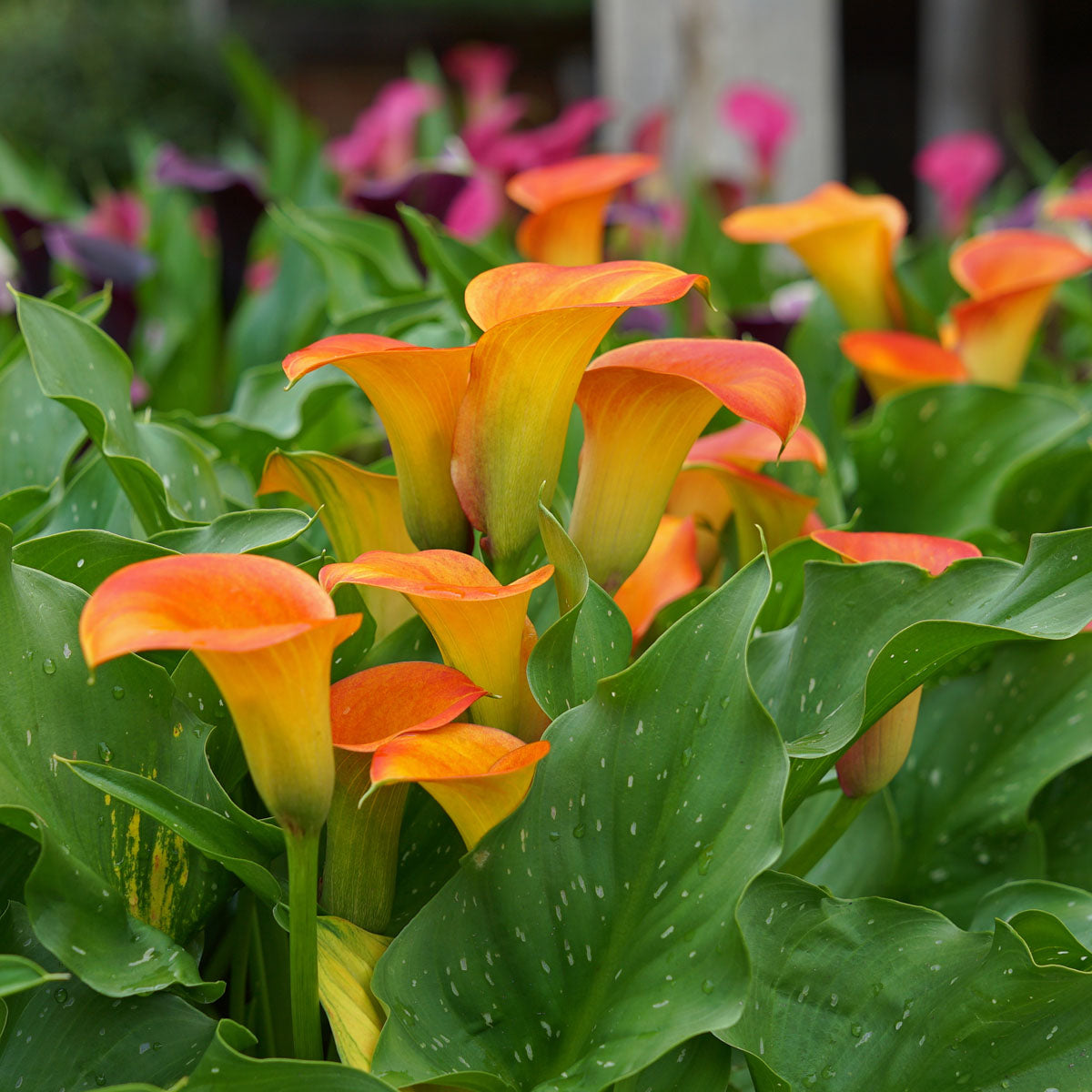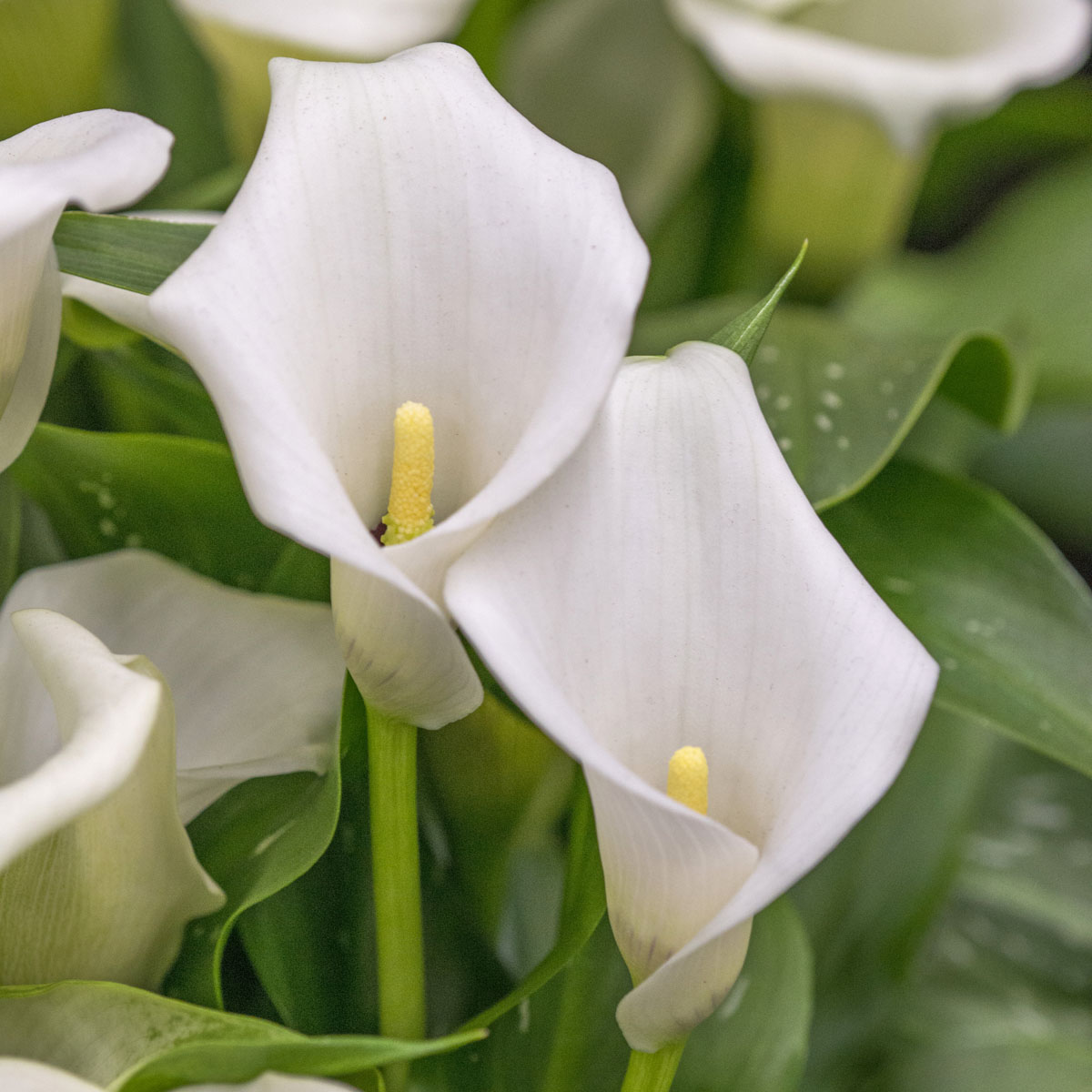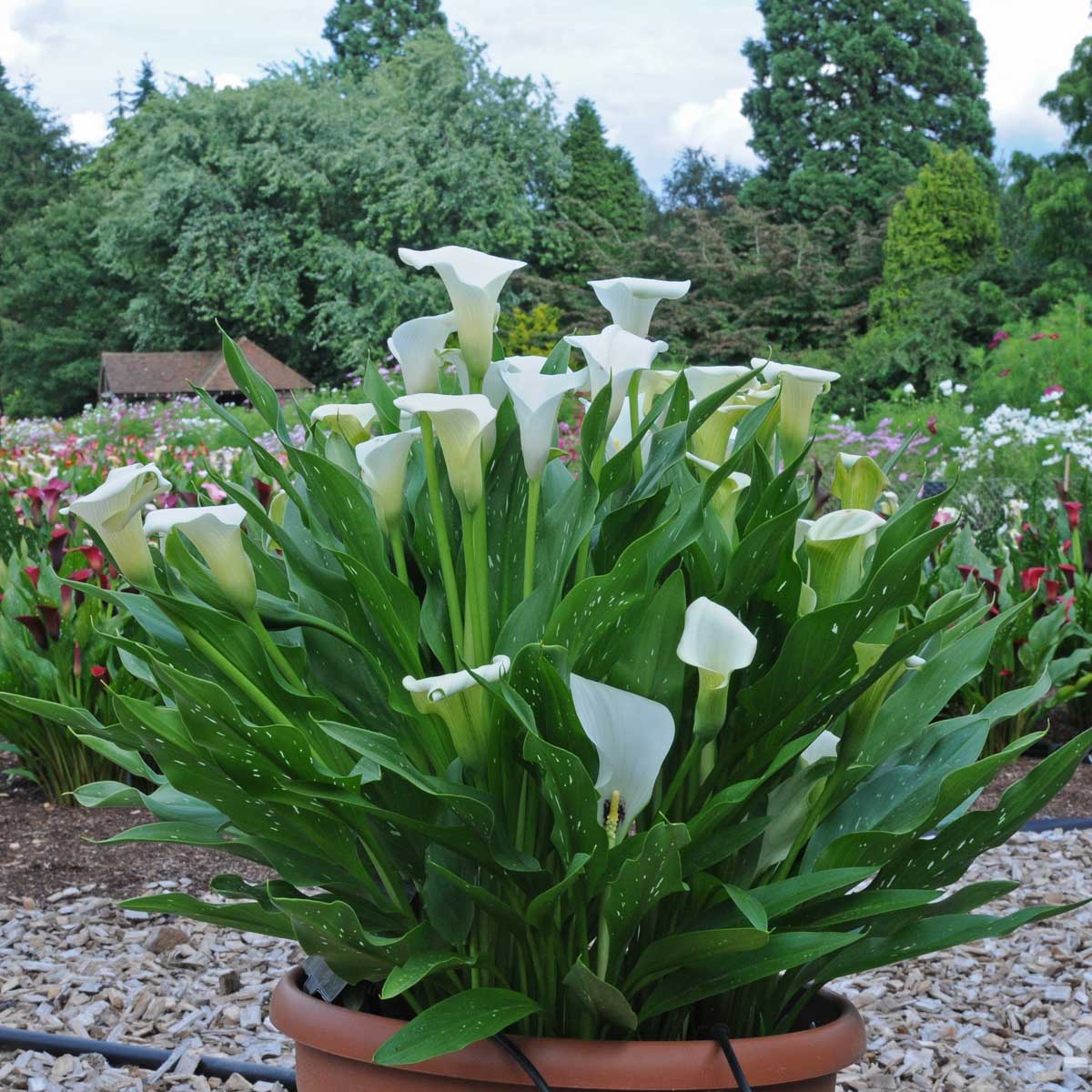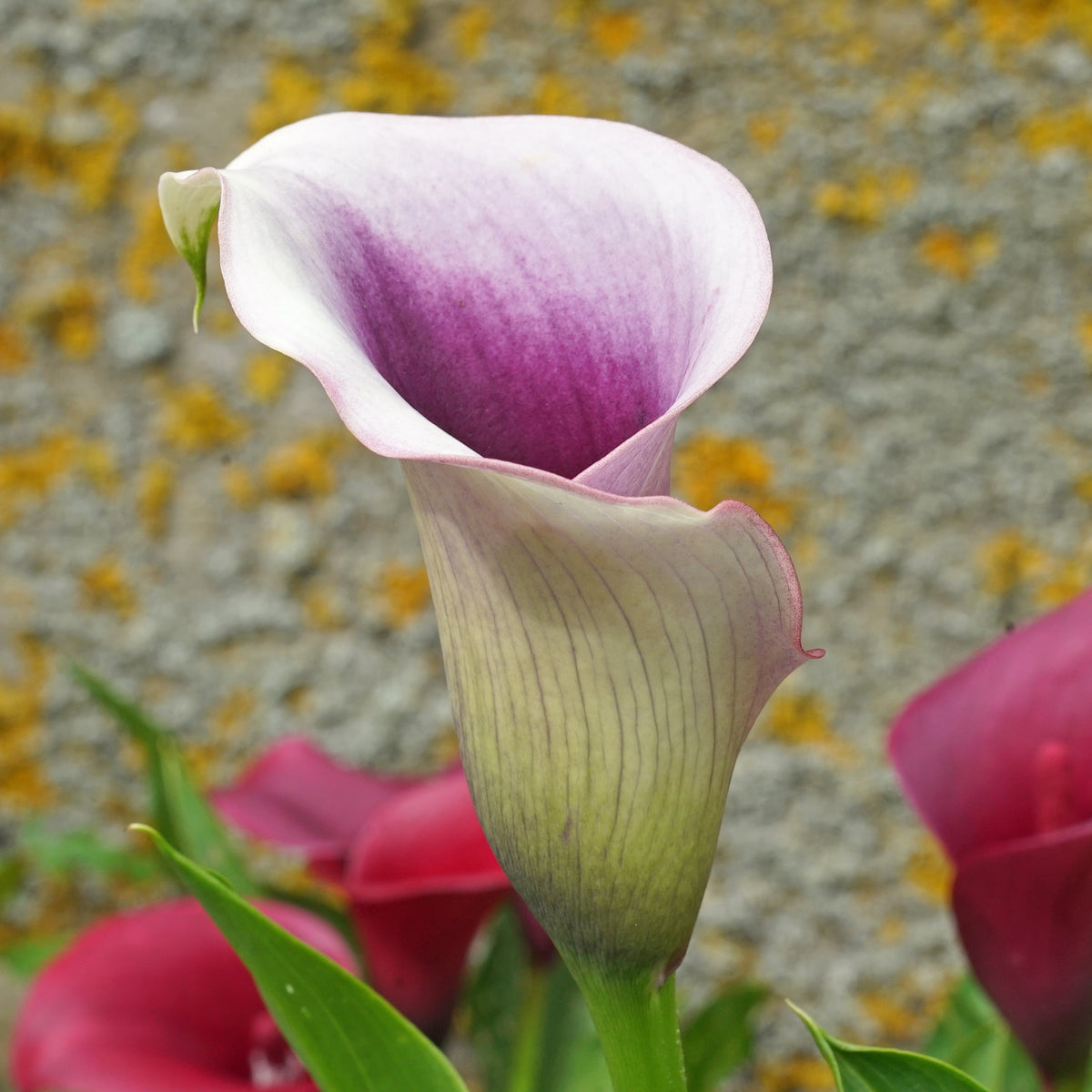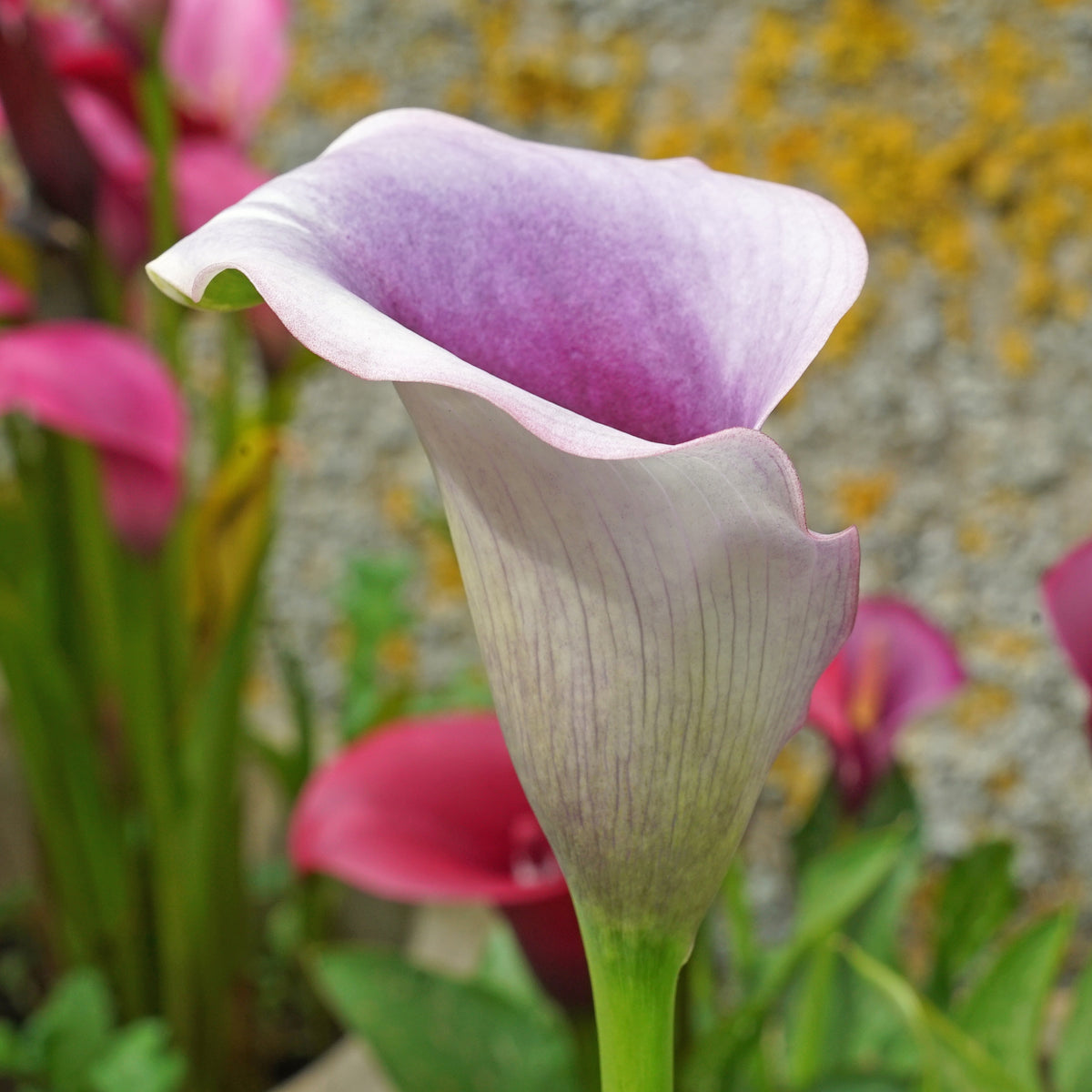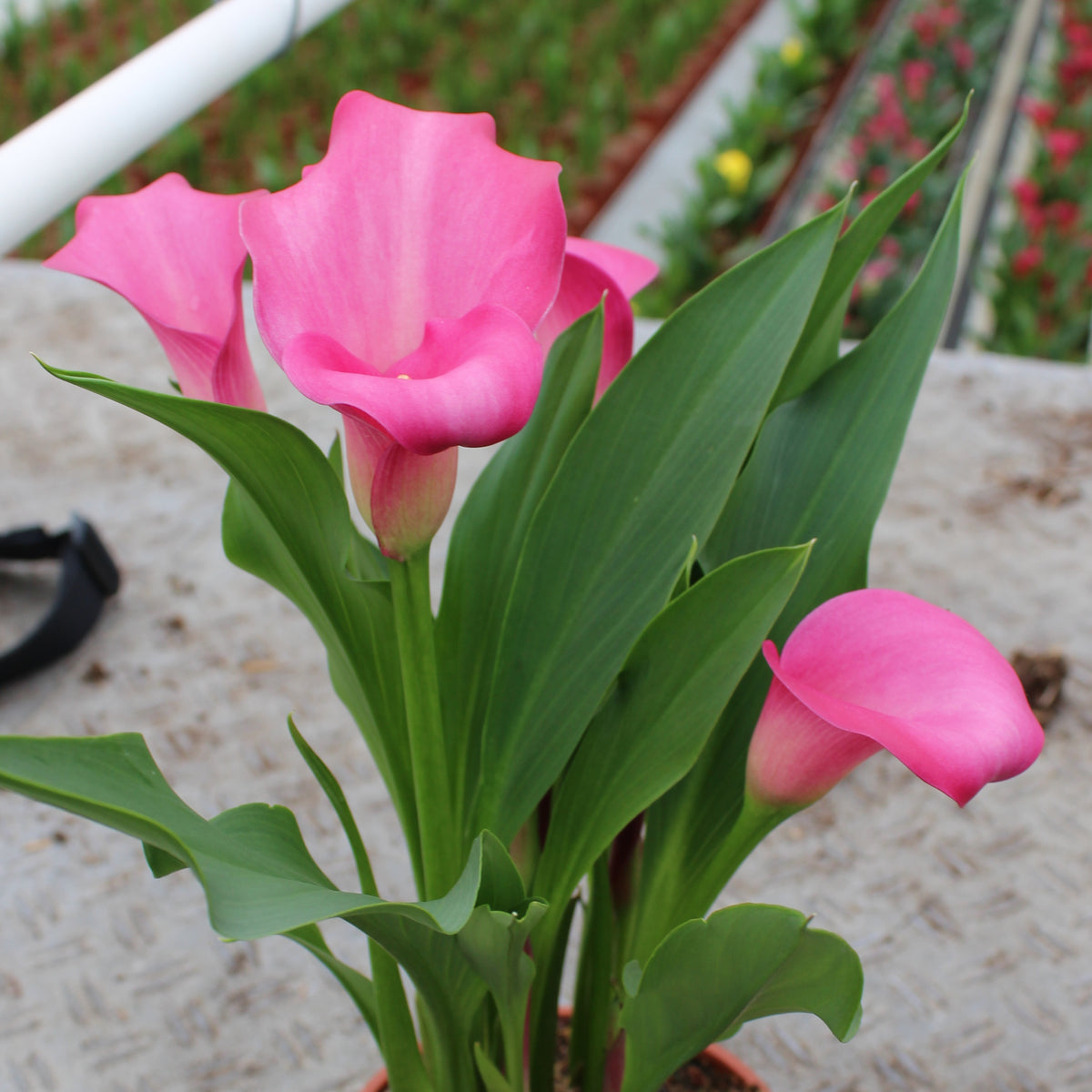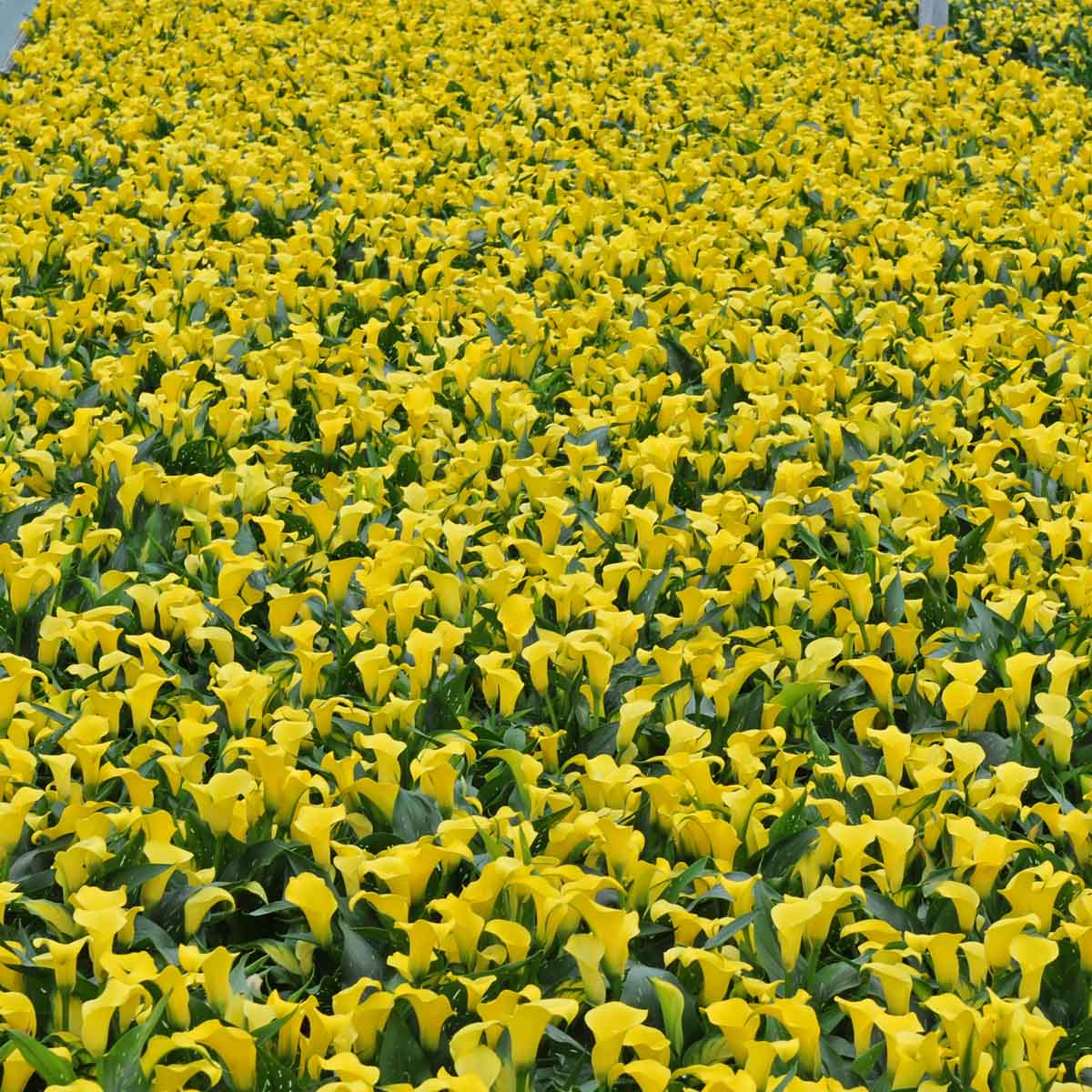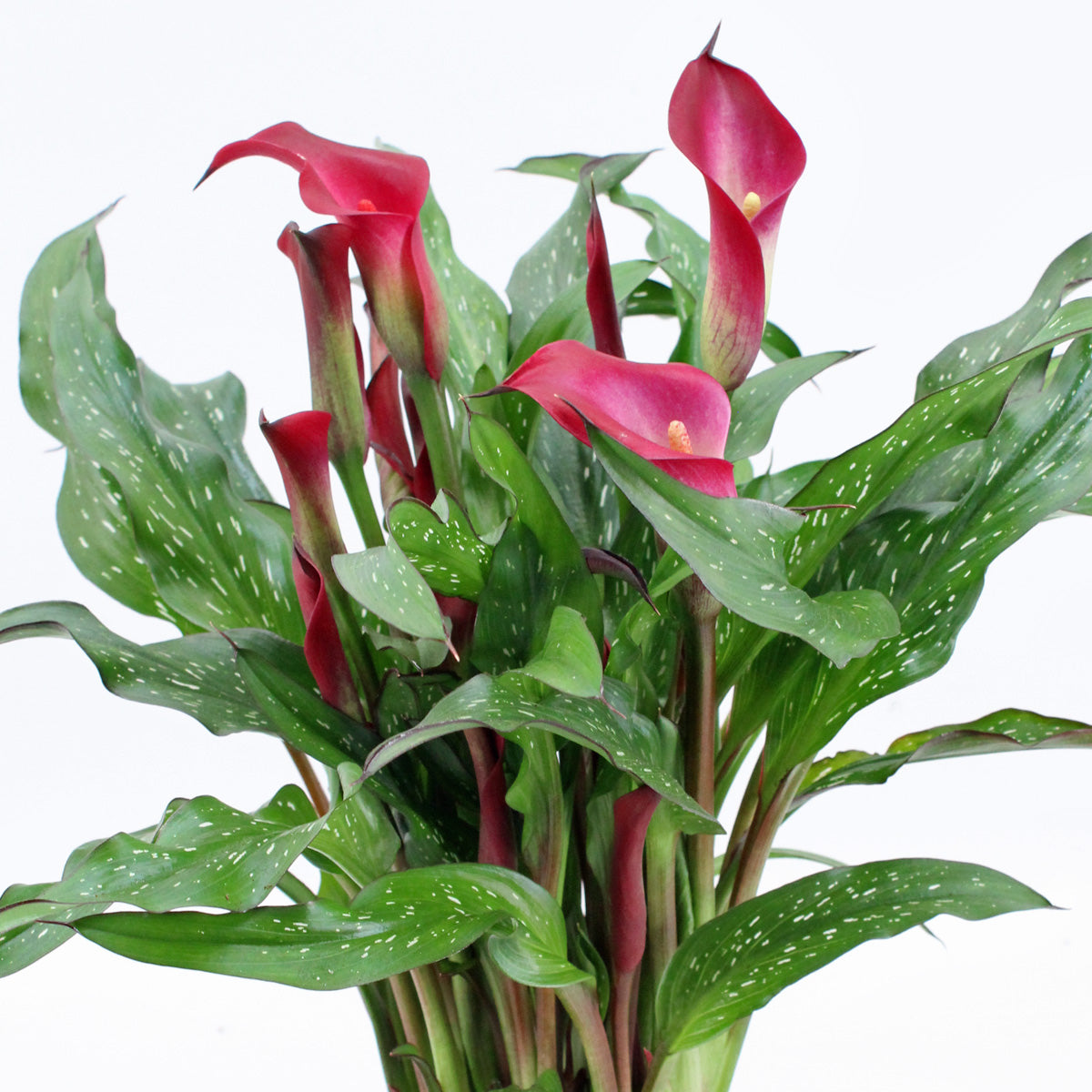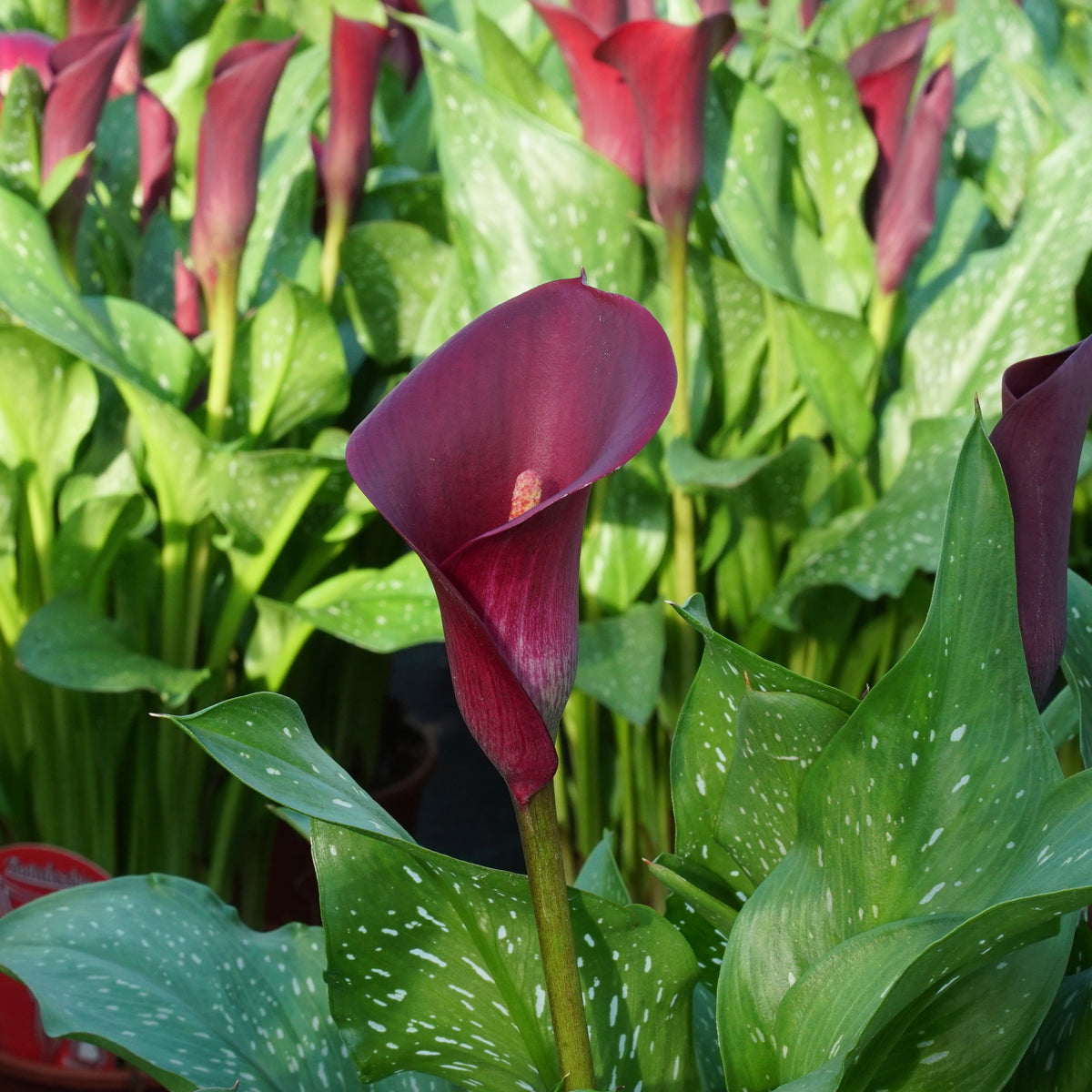
The zantedeschia is a very beautiful flower, which as a garden plant or patio plant sometimes has some difficulty breaking through. This is of course a shame, but not incomprehensible. There is a lot of ignorance about the zantedeschia as a garden or container plant. There is a lot of information on the internet about the properties of this plant that is only partly correct and does not provide enough support to be able to properly care for the zantedeschia. The fact that this information is incomplete is often because it is not explained that there are different types of zantedeschia, which must be cared for in a different way. One type is the zantedeschia aetiopica, this is a perennial that always remains green if it does not freeze and it gets enough water. A real marsh plant that you often encounter as pond planting and does very well there. A real perennial that survives with thick swollen roots and prefers to always remain in the ground. This zantedeschia is also best sold as a potted plant, just like all other perennials. But Fluwel does not offer this zantedeschia, the zantedeschias offered here are real tuber zantedeschias.
Tuber zantedeschia's
Tuber zantedeschias are real tubers, like a crocus and a dahlia , and can survive long periods as a tuber above ground. These zantedeschias are extremely useful for florists and pot growers. After all, you can store the tubers well, so you can direct the flowering a little to the moment you want to sell the flowers. These are also the ideal zantedeschia to plant in the garden or in a pot for on the terrace. When the temperature in the ground starts to rise a little in the spring, around the beginning of May, you can plant the zantedeschia tubers. You can plant them in a pot earlier. The end of March is already possible, but then you should store the pots in a somewhat warmer place. A cold greenhouse or conservatory is ideal, but a sheltered sunny spot outside around the house is also possible. 
Just like the perennial zantedeschia, the tuber zantedeschia also originates from South Africa and loves the sun. That is another misconception, that the Zantedeschia should preferably be grown in the shade. Nothing could be further from the truth, it is in love with the sun and the more sun you give it, the better it will do. In the shade, the flowering of the zantedeschia lasts just as long as in the sun, but it will get far fewer flowers and that is a shame.
The tuber zantedeschias that Fluwel offers are mainly cross-breeds between different varieties that occur in the wild in South Africa, such as zantedeschia rehmanii, zantedeschia albomaculata and zantedeschia elliottiana. When developing these new tuber zantedeschias, the focus was mainly on rich flowering and beautifully shaped leaves with a beautiful speckle. But the most important thing is of course the flower shape and the color, and the gentlemen breeders have succeeded excellently in this. You can find almost perfectly shaped flowers with beautiful colors in our assortment of zantedeschias .
Planting Zantedeschia
Plant the zantedeschia tuber with at least 10 cm of soil on top of the tuber. The zantedeschia makes roots at the bottom of the sprout that will grow out of the top of the tuber. A good layer of soil is therefore important for root development.
Can the Zantedeschia tuber remain in the ground over winter?
The Zantedeschia tuber cannot tolerate frost, if the tuber gets into the ice it is doomed. Where the perennial Zantedeschia can tolerate a little frost it is really fatal for the Zantedeschia tuber. So cover it well in the winter so that the frost cannot reach the tuber, and if in doubt take the tuber out in the fall and store it, just like the dahlia and the begonia , free from frost in the shed, garage or cellar.
Both the zantedeschia tuber that remains in the ground and the zantedeschia tuber that you have dug up and stored in the shed often bloom less richly in the second year than in the first year. This is because the grower where the zantedeschias come from dips the tubers in a plant hormone called gibbereline before delivery. This hormone, which is added to the dip bath in a minuscule amount, stimulates the tuber to form more flowers. This is of course fantastic for you as a consumer because each tuber will bloom richly. But no matter how beautiful it is, you get a distorted (but more beautiful) image of what the zantedeschia is like in reality. Only in the second year will you see the actual flowering of the species that you have planted. One species will bloom better in the second and third year than the other. (Gibbereline is a natural substance that is widely used in agriculture and horticulture, even in the brewing of beer gibbereline is often used. This plant hormone is extracted from a fungus.)
The RHS (Royal Horticultural Society) in England planted a trial of 75 different types of tuber zantedeschias in the spring on the trial fields of Wisley Garden to assess their performance in the garden. As a fellow member of the Bulb Committee I am also involved in this trial and the intention is to assess which types perform best in the garden. The flowering of the types in the second and third year will be an important point of assessment. The types that come back well will certainly receive an AGM (Award of Garden Merit). I hope to learn a lot from this in the near future and to offer you the best types in my web shop.
Carlos van der Veek

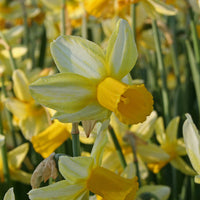



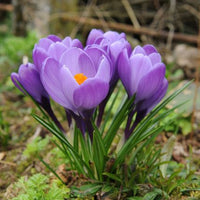




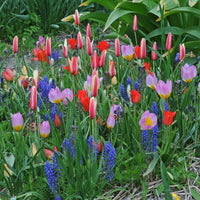


 Deutsch
Deutsch English
English
